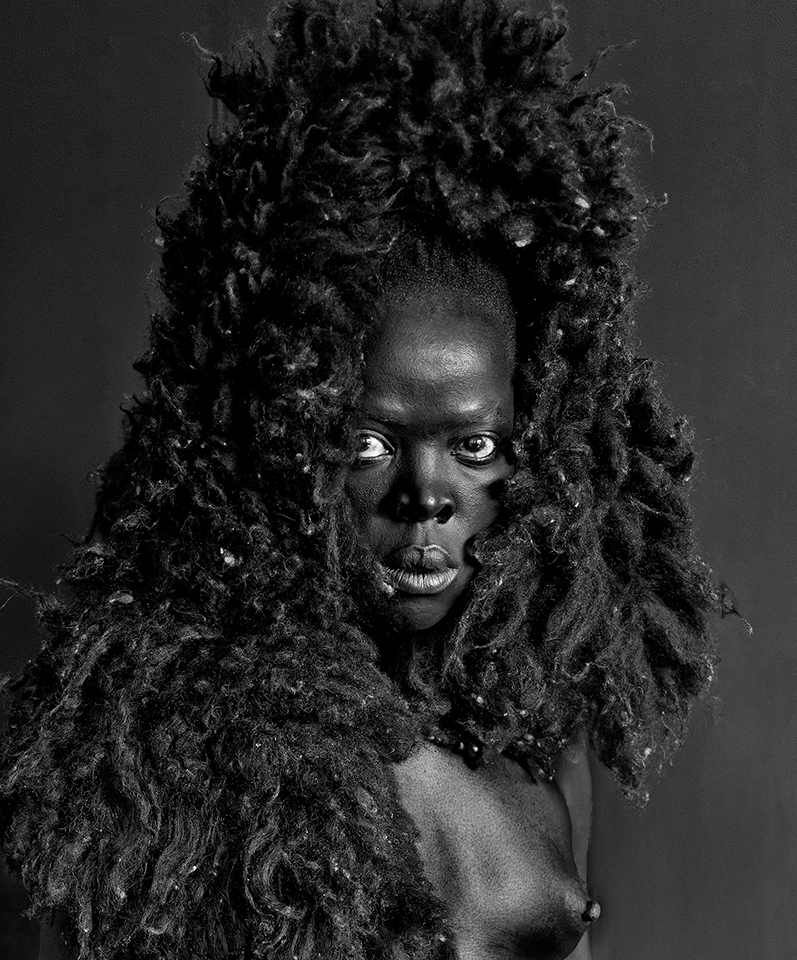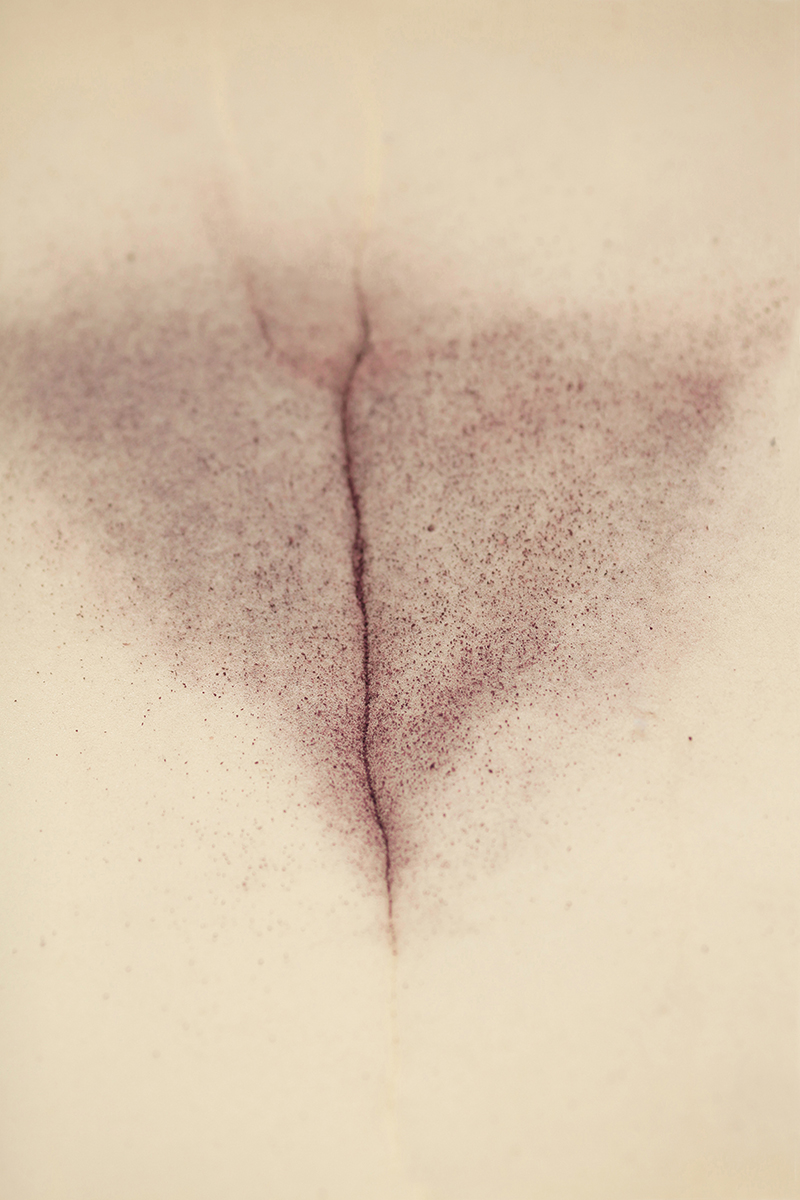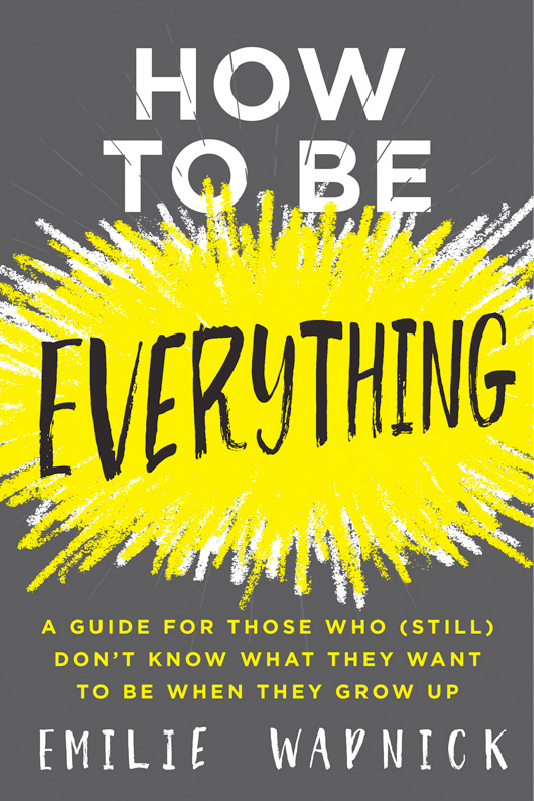In the photobook Somnyama Ngonyama, South African visual activist Zanele Muholi creates an identity, performs an identity, dismantles an identity, confronts with identity.
Olafur Eliasson’s Art of Playful Seriousness A review of the Tate Modern exhibition Olafur Eliasson: In Real Life
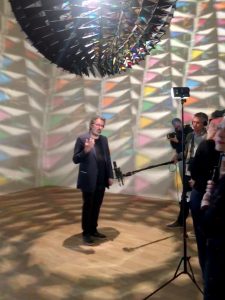
“One of the great challenges today is that we often feel untouched by the problems of others and by global issues like climate change, even when we could easily do something to help,” writes Olafur Eliasson in his 2016 essay, “Why Art Has the Power to Change the World.” Already we, the audience, are introduced to some of the artist’s key themes: ecology, self and others, and feeling. For anyone who has visited an exhibition or installation of the Danish-born artist, the sentiment resonates. His works are life-size encounters that engage and confound the senses to trigger what can only be called “experiences.” Now, at the Tate Modern in London, visitors can experience around forty of his works in the mid-career exhibition, Olafur Eliasson: In Real Life, open until 5 January 2020.
My own first experience with Olafur Eliasson came in 2010, at a solo exhibition at Martin-Gropius-Bau in Berlin—the city where his studio is based. I walked in without knowing anything about him or his work, and was greeted first with a collection of some geometric models—Honestly, I was unimpressed and thinking some people try too hard to make clear how “artistic” they are. Then, room by room, as I stepped into works that embodied entire rooms, that tired cynicism fell away. The turning point, the point at which I became a convert to Eliasson’s vision, was an encounter with Din blinde passager (Your blind passenger). It’s a room filled with artificial fog, illuminated with colored lights. Trying to describe it bears the same absurdity as coming out of a lucid dream or hallucinogenic state and trying to tell others what you saw; for you, as the experiencer, it is profound, and yet, when put into words it all sounds embarrassingly trite. It’s just not possible to translate or convey how it feels to be plunged into a world of color, so thick and disorienting that you cannot see your way out, so you simply take one step at a time, ambling deeper into the spell.
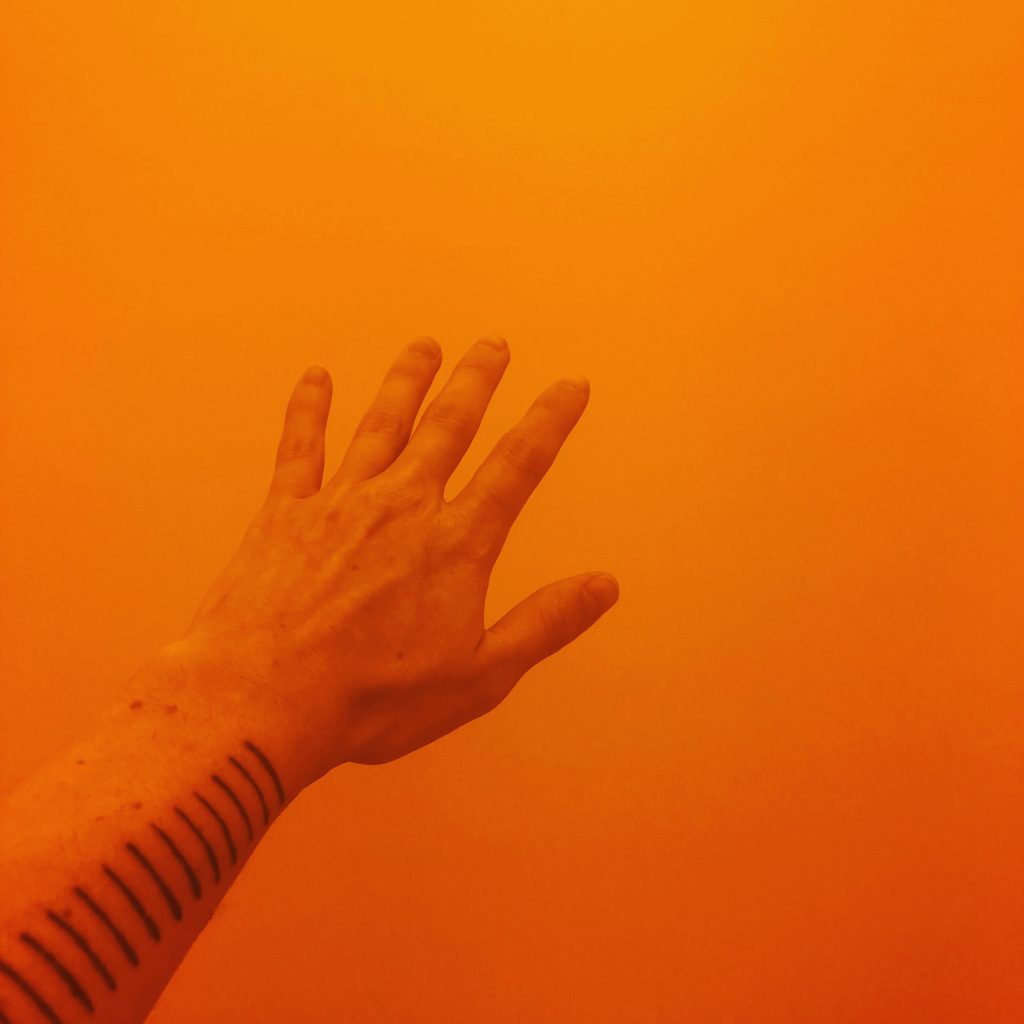
This work, Din blinde passager, is also at the Tate, and encountering it again was just as magical, albeit in a different way. I was more aware this time, of the work and of myself in the work. My eyes keep trying to make sense of the depth and the color, and it’s unclear whether I’m receiving information overload or deprivation. One of the curators of the exhibit, Mark Godfrey, explained in a press tour that there are two colors, white and yellow, of mono-frequency lights, and yet, while walking through the space, the human eye and brain generate other colors. The body is dazzled.
This very effect has been a source of criticism. In the exhibition catalogue, Godfrey recounts in his essay, “Olafur Eliasson: A New Model of Artist,” the reproach of Hal Foster that work like Eliasson’s “overawes us with sensory overload fostering emotional rather than critical responses.” The validity and value of that critique is mostly dependent on what you think the role of art and artists should be. Many agree that artists reflect our world back to us, but is their role to challenge us, to inform us, to provoke us, to amuse us, to engage us, to reassure us…? Perhaps to each of these ends we need a different artist. Many of them. Eliasson himself asserted in his article: “I believe that one of the major responsibilities of artists — and the idea that artists have responsibilities may come as a surprise to some — is to help people not only get to know and understand something with their minds but also to feel it emotionally and physically.”
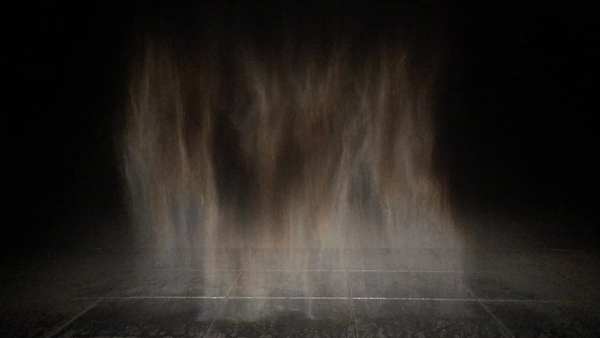
Consider another work in the exhibition, Moss wall, which is quite literally a 20-meter, floor-to-ceiling installation of living Scandinavian reindeer moss. The aroma is subtle, but still unexpected in a museum, and more than that, visitors are invited to touch the moss gently, to feel it. Another work, Regenfenster (Rain window), is nearly imperceptible: it is, simply, one of the building’s existing windows with an installation of water that makes it appear from the inside that it’s raining. Waterdrops run down the exterior of the window in a way that is so familiar as to be invisible. On a truly rainy day, the effect of the installation may disappear entirely.
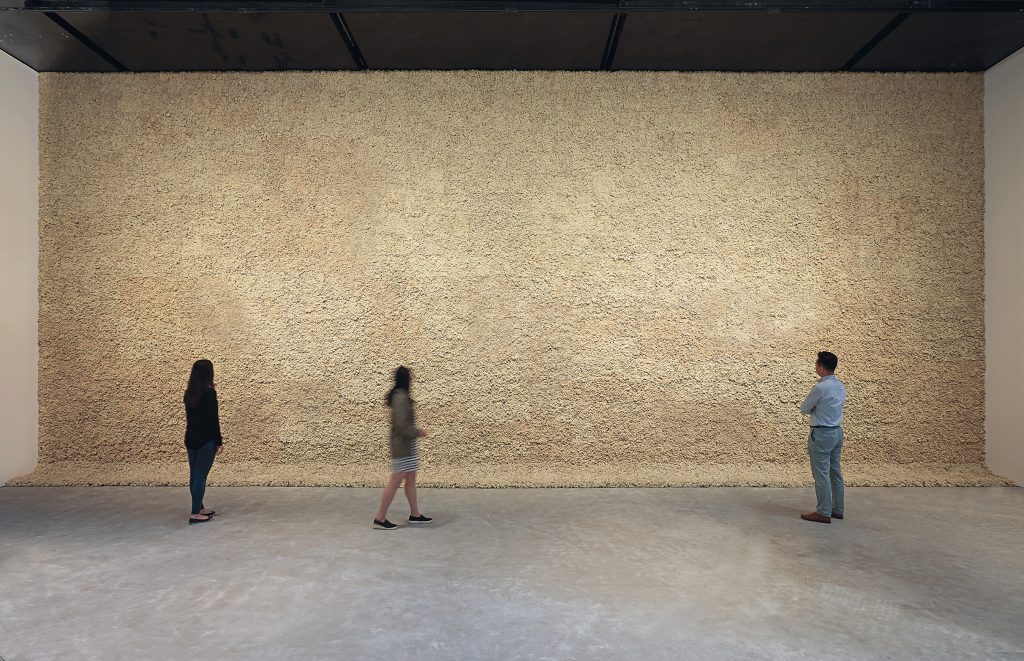
Eliasson’s works break out of the sterility, cold commentary, and self-aware cleverness of “art” and bring us back into our bodies. He distills complex ideas into elemental forms that speak directly to our human senses, inducing a guileless sense of wonder. As put by Godfrey: “While various artists in the previous decade [to the mid-1990s] had been preoccupied with representation, finding ways to deconstruct media imagery or to forge new representations of various identity groups, Eliasson was part of a generation of artists creating situations and new realities.”
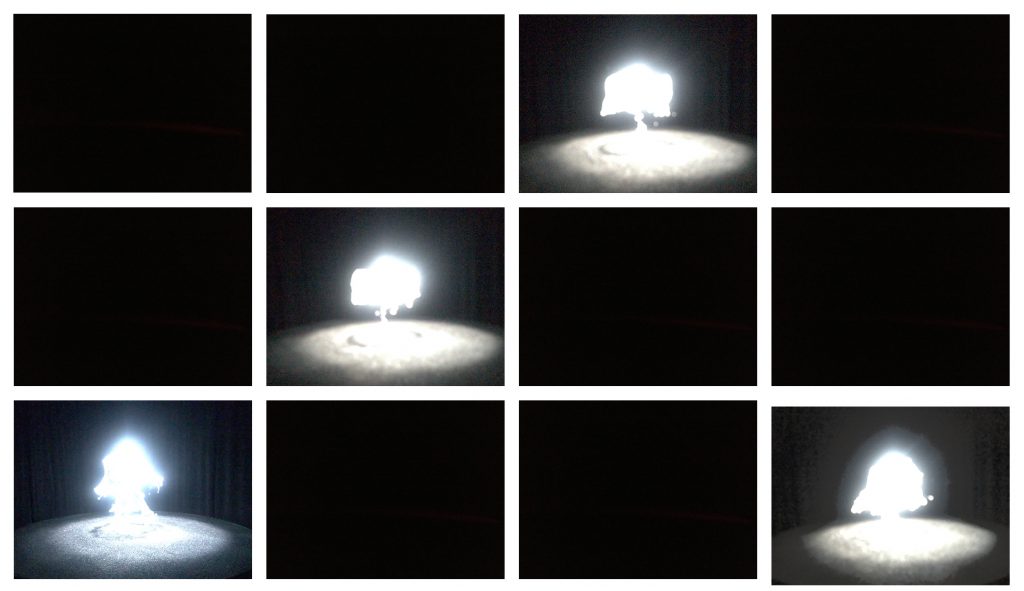
This concept of “new realities” is perhaps what’s at stake at the exhibition, In Real Life. Eliasson’s work often generates an experience that, from our everyday malaise, feels either like a dream or like waking up. It shares with altered states the quality of confusing our consciousness as to whether the mundane is real and the exceptional is an illusion, or if it’s the other way around.
The philosopher Timothy Morton (who has even collaborated with Eliasson) expounded in his book Being Ecological on Kant’s theory of the difference between the real and reality: “It’s like the difference between a musical score – a bunch of dots and lines on a page – and the ‘realization’ of that score by a musician and the audience who showed up to hear it. Reality is, if you like, the feeling that it’s real: the music is what it is – this is a Bach violin sonata, not a piece of electronic dance music – but it doesn’t really ‘exist’ until you play it or listen to it.” Likewise, Eliasson’s works are real but not reality. Whether it’s moss on a wall or rain on a window or a room full of fog, they are objects in the Tate that only become reality as you and I walk through, feeling them into existence.
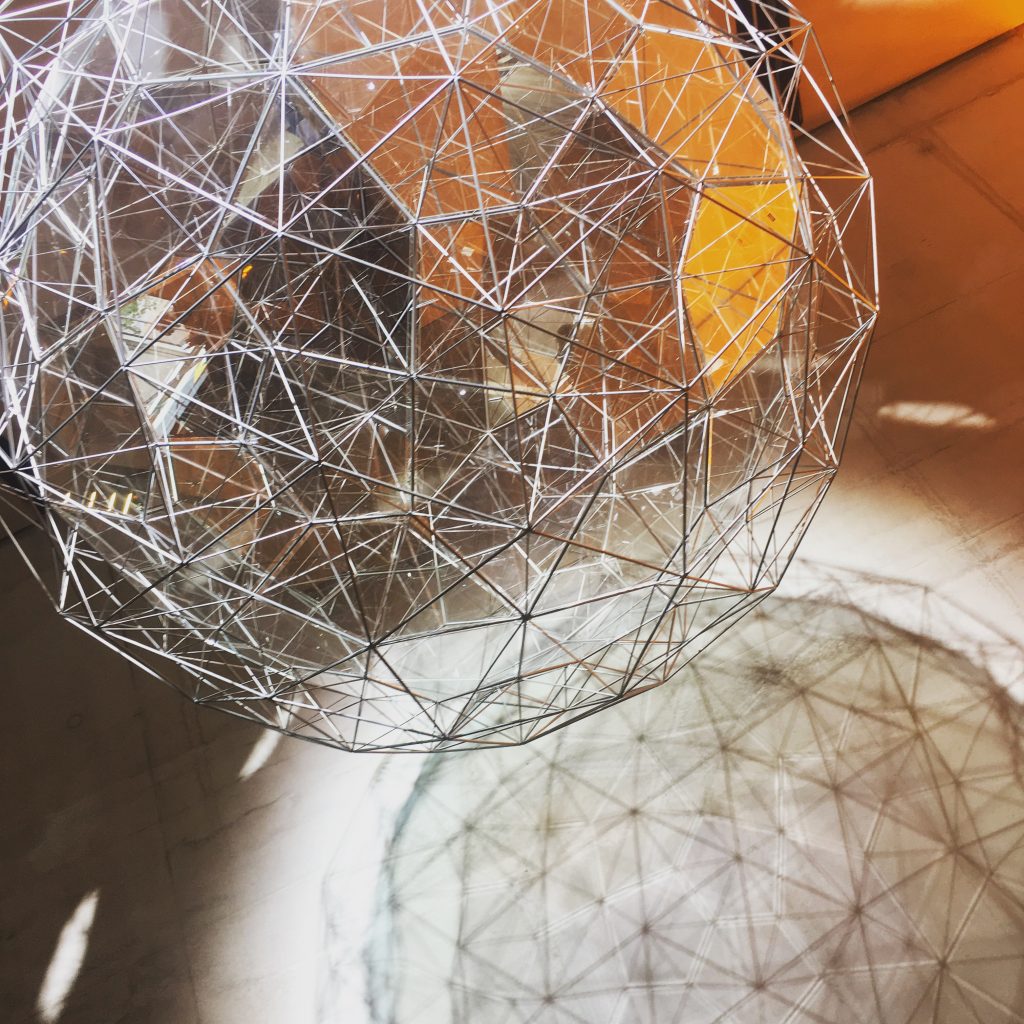
This line of thinking is wholly entangled in Eliasson’s work|life conglomerate. In his book, The Kitchen, comprised of recipes and inspiration from the Studio Olafur Eliasson kitchen, based on local and sustainable vegetarian meals, he writes: “To eat is to have an experience literally on the inside, and our knowledge of hunger and of food in our stomachs is, more than anything, a felt knowledge.” It’s therefore also a welcome integration that the Tate has included a specially prepared Eliasson-menu in their Terrace Bar—we can not only look at his philosophy and feel it, we can imbibe it, we can eat it and let it nourish and become us.
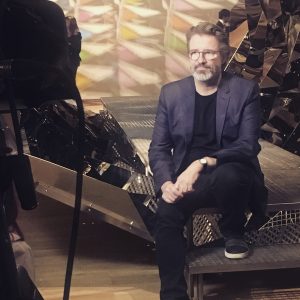
It is a philosophy that becomes important as we return to Eliasson’s motivation, topics like climate change, which are so incredibly large and complex that our intellectual understanding of them is deeply inadequate and often overwhelmed. As mere data, our minds try to make sense of it and occasionally succeed. As a sensory experience, our bodies are better equipped to understand, in a deep sense of the word. We don’t just know, we embody and become that truth.
The power behind Eliasson’s work, though, is that it is moral without moralizing. We are introduced—gently, humanely—to his ideas through the experience of our selves. That is, the works do not ask us necessarily to understand the works, or to understand Eliasson, they ask us to pay attention to ourselves and the way we sense and perceive our environment. They bring us into awareness of other people in the room and the individualized ways that we encounter and interpret the same stimuli. They encourage what Morton calls, “playful seriousness.” Perhaps most importantly, they invite us to remember that we—that all-important “we”—are alive.
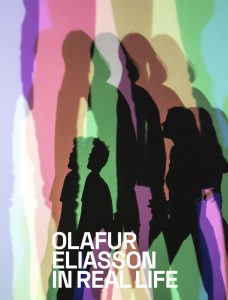 Olafur Eliasson: In Real Life is on display at the Tate Modern from 11 July 2019 – 5 January 2020. The exhibition catalogue, which includes an essay by curator Mark Godfrey and eighteen conversations between Eliasson and various people relevant to his theory, is available from the Tate for £19.99.
Olafur Eliasson: In Real Life is on display at the Tate Modern from 11 July 2019 – 5 January 2020. The exhibition catalogue, which includes an essay by curator Mark Godfrey and eighteen conversations between Eliasson and various people relevant to his theory, is available from the Tate for £19.99.

